|
This section contains information relating to our associations' professional annual meetings. These meetings are vital not only for the financial health of our organizations, but they also represent great opportunities for all of us to gain new skills, to share academic or research interests, and to acquire continuing education hours for certification.
We continue to expand this section to include recent manufacturer press releases and other noteworthy items of information for our JBC subscribers and Association members. Please let us know how we may improve this section, as well as other components of your Journal.
The JBC hopes that you will take advantage of these annual meetings and the opportunities they offer, and we encourage you to support your professional Associations.
Upcoming 2009 Meetings

San Francisco, California
at the Moscone Center
January 5 - 9, 2009
Macworld is the premier event for the Mac community, bringing together
industry leaders shaping the future of Mac technology in the largest
single gathering of Mac developers, engineers, and enthusiasts in
the world.
The Macworld conference consists of seven programs featuring educational
sessions taught by renowned industry experts, covering a wide array
of themes that span the Mac industry’s trends and developments.
From technical to hands-on to simply wanting to understand a particular
functionality the Mac platform has to offer, the Macworld conference
offers a full mix of content to appeal to enthusiasts at all levels.
The 2009 Macworld Conference Program includes:
Users Conference – Skill Development across
Mac-enables solutions.
Mac IT Conference – In Depth topics for
IT Professionals
Power Tools – 2 day in-depth training on
popular Mac software applications.
Market Symposiums – analysis and deployment
of Mac technology in key markets.
Hands-on MacLabs - Hands-on, focused training
classes.
Creative Safaris – Daylong hands-on and
fieldwork with key Mac tools.
Super sessions – Quick hits to get you up
to speed on key Mac technology.
The magnificent Moscone Center is centrally located in the heart
of downtown's bustling SoMa (South of Market) district, the newly
renovated San Francisco Marriott is merely steps from cable cars,
Union Square, museums, world-class shopping, dining, and entertainment.
The San Francisco Marriott has recently completed a $39 million
room and suite renovation that features contemporary furnishings
and a comfortable "urban apartment" feel. All rooms are
furnished with Marriott's new luxurious Revive Bed. The gracious
staff and deluxe hotel amenities of the San Francisco Marriott stand
ready to make your visit elegant, relaxing and memorable.
For additional information, visit: http://www.macworldexpo.com/live/20/

eTELEMED 2009
Cancun, Mexico
February 1 - 6, 2009
The International Conference on eHealth, Telemedicine, and Social
Medicine (eTELEMED 2009) will offer registrants opportunities to
learn about topics relevant to the field.
Included in the Conference will be presentations relating to:
eHealth technology and devices
eHealth data records
eHealth information processing
eHealth systems and communications
Hospital information systems
Internet/intranet services
Surgical systems
Sensor-based systems
Satellite eHealth communications
Secure data transmissions
Body-sensor networks
Telemedicine/eHealth applications
eHealth systems and emergency situations
Challenges of large-scale, cost-effective eHealth systems
Please visit: http://www.iaria.org/conferences2009/CfPeTELEMED09.html

Las Vegas Convention Center in Las Vegas, Nevada
March 3 - 5, 2009
PMA 09 kicks off an exciting week of innovative products and ideas
for the photographic memories market.
As a professional trade association, PMA helps the worldwide photo
imaging community achieve business success and adapt to new technologies.
Its commitment to 20,000 members in 100-plus countries is part of
an 82-year legacy that connects business owners to a network of
knowledge and support. PMA furthers this purpose through the development
of educational programs and business services, marketing research,
publications, and trade shows. As a nonprofit organization, any
success enjoyed by PMA in its endeavors directly benefits the industry,
allowing PMA to provide continual services and activities for members.
Our annual meetings showcase our educational programs, as well as
provide a look at related imaging products.
For additional information, please visit: http://www.pmai.org/index.cfm/ci_id/37703/la_id/1.htm

Budapest Hungary
Conference: April 5 - 8, 2009
IEEE WCNC is the premier wireless event for wireless communications
researchers, industry professionals, and academics interested in
the latest development and design of wireless systems and networks.
Sponsored by the IEEE Communications Society, IEEE WCNC has a long
history of bringing together industry, academia, and regulatory
bodies. In 2009, IEEE WCNC will be held in Budapest, Hungary, the
pearl of the Danube.
For more information, please visit: www.ieee-wcnc.org/2009

The 28th Conference on Computer Communications
Sponsored by the IEEE Communications Society
Rio de Janeiro, Brazil
April 19 - 25, 2009
The IEEE annual Conference on Computer Communications addresses
key topics and issues related to computer communications, with emphasis
on traffic management and protocols for both wired and wireless
networks. Material is presented a program of technical sessions,
tutorials, panel discussions and workshops. The first INFOCOM conference
took place in 1982 and has since taken place at many locations around
the world - Italy, Japan, Israel, Spain (and now Brazil!), as well
as most regions of the U.S.
http://www.ieee-infocom.org/
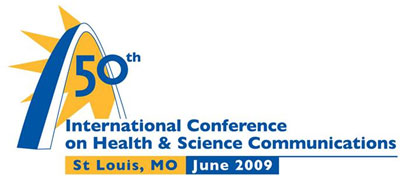

)
Annual Meeting and Retreat
St. Louis, Missouri
June 17 - 20, 2009
The Health and Science Communications Association and the Association of Biomedical Communications Directors invite you to attend and participate in the 50th International Conference on Health & Science Communications. The conference will be held June 17-20, 2009 in the "Show Me" state of Missouri, the home of the Gateway Arch. This year's theme is The Creative Arch - Where imagination meets technology. This meeting is also historic in that it commemorates 50 years of excellence in the field of communication serving both the health and science arena.
The 2009 Conference will showcase some of the finest, most interesting applications of technology in communications. The conference will feature creative applications for these technologies, and offer problem-solving solutions to communications challenges.
Topics to be explored include: website usability, social networking, design flexibility, distance learning, creativity, managing in financially stressful times, and much, much more.
So mark June 17 - 20, 2009 in your calendar and join us in St. Louis to learn, network, tour, create, question, discover, relate, understand, and much more with colleagues from around the world. For more information, please visit the conference website: http://www.hesca.org/stlouis/
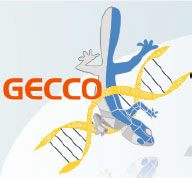
Delta Centre-Ville Hotel
Montreal, Canada
July 8 - 12, 2009
The Genetic and Evolutionary Computation Conference (GECCO-2009)
will be located in Montreal, Canada for 2009. This Conference will
present the latest results in the growing field of genetic and evolutionary
computation.
Conference topics will include: genetic algorithms, genetic programming,
evolution strategies, evolutionary programming, real-world applications,
learning classifier systems and other genetics-based machine learning,
evolvable hardware, artificial life, adaptive behavior, ant colony
optimization, swarm intelligence, biological applications, robotics,
co-evolution, artificial immune systems, and more.
About the Conference Venue
Delta Centre-Ville hotel is located in the heart of downtown, where
Old Montreal and new Montreal blend seamlessly, and adjacent to
vibrant nightlife, boutique shops and eclectic cuisine.
For more information on Delta Centre-Ville, please visit: http://www.deltahotels.com

Park City, Utah
July 26 - 30, 2009
Held annually in North America, this international meeting includes
a packed program of seminars, workshops, a juried media salon, and
commercial exhibits to provide attendees with inspiration and the
latest information on visual media in the life sciences.
Our meeting highlights will include an Opening Reception featuring
the BioImages Salon Awards, a three-day Scientific Program, and
an evening Social Event. More BIOCOMM 2009 information will be posted
as it becomes available.
http://www.bca.org/annual_meeting/index.html
For information about Park City, Utah, please visit: http://www.parkcityinfo.com/
Our hotel venue for this event will be the beautiful Marriott Park
City. For additional hotel information please visit: http://www.parkcitymarriott.com
Contact: Thomas Bednarek, RBP
BCA Director of Conferences
Phone: 409-772-2876
email: tbednare@utmb.edu
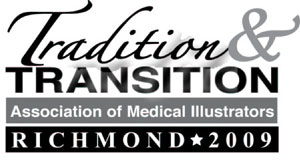

Richmond, Virginia
July 29 - August 2, 2009
Richmond, Virginia! A city with a rich and vibrant history, home
to events from the earliest days of our nation’s history through
today, including the first elected African-American governor in
the U.S.
The City of Monuments abounds with activities and interesting places
to visit, learn and enjoy. From the beautiful St. John’s Church
on Church Hill, the location of Patrick Henry’s call to arms
in 1775, to the sleek new convention center downtown. From Colonial
Williamsburg to Mr. Jefferson’s University, both are within
an hour’s drive. Richmond is easy to reach and easy to love.
Cultural venues abound, with the American Civil War Center, the
Virginia Museum of Fine Arts with the largest Faberge collection
outside of Russia.
The AMI meeting will take a hint from the city itself - and look
at topics embracing our history and traditions through to the cutting
edge of computer technology and medicine and their interface in
medical communications. The Richmond 2009 meeting committee looks
forward to seeing you next year in Richmond!
More information will be made available soon at: http://www.ami.org

Ernest N. Morial Convention Center
New Orleans, Louisiana
August 3 - 7, 2009
Please join us in New Orleans in August for the highest quality,
most timely educational experiences the computer graphics community
has to offer, presented by the most powerful and most engaging leaders
in computer graphics and interactive techniques.
Don’t miss this one!
http://www.siggraph.org/s2009
|
|
 |
|
Related Association
News
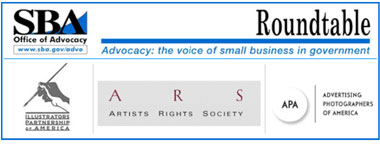
SBA Roundtable Web Cast Link
by Illustrators' Partnership of America
The web cast of the Orphan Works Roundtable is now available at:
http://videos.cmitnyc.com/asip.html
Orphan Works legislation currently before the U.S. Congress will
drastically change the way biocommunicators and others market and
manage their copyrighted images. Under this proposed legislation,
images that have been determined that to be “orphaned”
can be then be used by anyone, at anytime will little or no repercussion.
The Orphan Works Roundtable was held recently to openly discuss
this legislation, and the negative effect it would have on the illustration
community if it should pass.
The Orphan Works Roundtable has been described as:
"A Seminal Event"
"Unprecedented"
"The most effective advocacy in opposition to these bills I
have seen."
"The Gathering of the Tribes"
These were some of the comments we received from the recent Roundtable
Discussion on Orphan Works (held August 8, 2008), conducted by the
Small Business Administration. Artists, photographers, songwriters,
musicians, writers and spokesmen for collateral businesses all made
this the best attended Roundtable the SBA has ever conducted.
As one member of the audience said, perhaps the only good thing
about the Orphan Works bill is that it's brought so many creative
communities together. The full house is the best measure of the
concern creators have about this effort to undermine copyright law.
Here are some of the key points to emerge from the discussion:
- The high cost of digitizing and registering work with commercial
databases will make compliance impossible for most artists.
- This will cause billions of unregistered works to fall into
the public domain.
- To make money, commercial databases will have to promote and
facilitate infringement.
- Infringer-friendly databases will compete with artists for clients.
As one panelist summed up: this bill "will socialize costs
and privatize profits."
If you missed this important industry event, please watch it now
at your convenience. You may review the agenda, the panelists and
their biographies on the Illustrators' Partnership blog located
at:
http://ipaorphanworks.blogspot.com/2008/08/80808-sba-hearing-on-orphan-works.html
The Illustrators'
Partnership of America
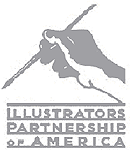
The Association of Medical Illustrators, in conjunction with The
Society of Illustrators, The National Cartoonists Society, The American
Society of Architectural Illustrators, and The Illustrators' Partnership
of America, continues to seek better ways to market and license
the rights to their creative work.
One of the goals of this working coalition is still to explore
the possibility of collecting and pooling artists' reprographic
fees in order to create a collective rights administration to return
reproduction royalties to illustrators. Since the birth of the Illustrators'
Partnership of America, the organization's key mission has been
the development of a licensing agency that would truly represent
the best interests of American artists and illustrators.
For more information about the Illustrators' Partnership of America,
visit the IPA Website at http://www.illustratorspartnership.org/
For information about protecting your copyrights:
http://www.copyright.com/
http://www.ifrro.org/
http://www.copyright.gov/
http://www.copyright.gov/circs/circ1.html
Proposed Legislation
Could Orphan Copyrights
On January 23, 2006 the U.S. Copyright Office issued their
Orphan Works Report, outlining their recommendations to Congress
for changes to the 1976 Copyright Act. While we know the Copyright
Office made a sincere effort to solve the problem of copyright availability
for users, we believe these proposed changes will undermine copyright
protections for artists.
The report defines an "orphan work" as any work where
the author is unidentifiable or unlocatable, regardless of the age
of the work. It extends to both published and unpublished
works, and includes both U.S. and foreign works. At 127
pages, the report is too long to analyze in detail here, but you
can access it at the Copyright Office website. For those who wish
to cut to the chase, the explicit language for their proposed changes
can be found on page 127.
http://www.copyright.gov/orphan/orphan-report-full.pdf
To understand the effect these changes may have, consider what the
1976 Act currently guarantees to you. It guarantees that you have
the exclusive right to authorize or withhold
reproduction of your work and to create derivative works. It guarantees
this from the moment you fix the work in a tangible form, and it guarantees
this without imposing formalities such as a copyright mark
or registration. The Berne Convention for the Protection of Literary
and Artistic Works forbids such formalities as a condition on the
enjoyment and exercise of copyright. The U.S. formally acceded to
Berne in 1988.
Placing Relevant
Information on Your Work
The legislation proposed by the Orphan Works Study would
not officially return artists to pre-Berne status, but for
practical purposes, it would have that effect. It would not require
you to mark each picture with a copyright notice and your
name. But failure to do so on your part (or your publishers') could
be used by infringers to justify their own use of your work. Here's
the relevant part of the Copyright Office's explanation:
"For authors and copyright owners, marking copies of
their works with identifying information is likely the most significant
step they can take to avoid the work falling into the orphan works
category. This is particularly true for works of visual art,
like photographs and illustrations, that otherwise do not contain
text or other information that a user can rely on to help determine
the identity of the copyright owner. Nothing in the Office's
recommendation would make such markings mandatory . . . Nevertheless,
the presence and quality of the information on particular copies
will be a highly relevant fact as to whether a reasonable search
will find the copyright owner." (p. 9, emphasis
added)
In other words, the "information" that has been placed
on your work will be a "highly relevant fact" in determining
- for legal purposes - whether a user
has made a "reasonable search" to find you before he or
she uses your work. But since the report doesn't set objective standards
for what constitutes a "reasonable search," it paves the
way for endless ambiguity. What do you do if a user infringes your
work after what he regards as a reasonable effort to find you? What
if someone simply uses your work on the grounds that you may not
find out about it, and if you do, justifies his actions by citing
the "fact" that your work lacked "relevant information?"
No Penalties For Infringing Orphan Work
Those who have demanded this legislation have argued that
users should not be subject to penalties for infringing
orphan work. They say that the public should be encouraged to use
this work and that penalties would discourage use. The Copyright
Office has agreed:
"Our recommendation follows this suggestion by limiting
the possible monetary relief in these cases to only 'reasonable
compensation' which is intended to represent the amount the user
would have paid to the owner had they engaged in negotiations
before the infringing use commenced." (p. 12)
In other words, if someone infringes your work because they couldn't
find you - and you come forward to claim authorship - this system
would only require the infringer to pay you the fee they presume
you would have "negotiated." Yet if someone has already
published your work - and faces no risk for statutory damages, attorneys‚
fees and court costs, they'll be in a better position than you to
dictate what constitutes a "reasonable" fee. And unless
you can work with the fee they offer, you'll have no choice but
to take the issue to court, knowing that the cost of litigation
could well exceed whatever "reasonable compensation" the
courts might determine.
By considering and rejecting remedies for infringement, the Copyright
Office acknowledged the complaints by creators‚ groups that
individual authors generally lack the resources to police unauthorized
usage:
"While corporate copyright owners were generally in favor
of a reasonable compensation approach, individual authors like
photographers, illustrators and graphic artists noted that under
current conditions, obtaining a lawyer to even file an infringement
case is prohibitively expensive, so much so that only where statutory
damages are available is it possible to file a case. If compensation
were limited to only a reasonable royalty, they fear that it will
likewise be practically impossible even to recover that compensation
given the cost of litigation." ( p. 117)
But while the Report expresses "sympathy" for this fact
of life, it states that "[t]his problem . . . has existed for
some time and goes beyond the orphan works situation, extending
to all types of infringement of the works of individual authors
. . . It is not, however, within the province of this study
on orphan works." (p.114, emphasis added)
Yet if the problem is not within the province of the Orphan Works
Study, we must introduce it into the coming debate over
legislation. Otherwise, a law that exposes vast quantities
of copyrighted work to potential abuse could make the existing bad
situation worse, making payment for usage the option of last resort
for any user who chooses to exploit this glaring loophole.
Are Registries a Solution?
The Orphan Works Report notes that many respondents to
the Study proposed "registries or other databases of owner
or user information" as a possible solution of tracking rights
holders. A publicly available visual artists registry would
match unidentified art to an artist and/or the artist's contact
information. But creating a registry requires technology and staff
unavailable to independent artists. Other countries protect their
artists' exclusive rights through the administration of collecting
societies. The Orphan Works Report states that "such administrative
mechanisms might ultimately be of great assistance in helping put
owners and users of orphan works together" (p. 95), but says
the Copyright Office lacks the resources to create and administer
them:
"[W]e believe that registries are critically important,
if not indispensable, to addressing the orphan works
problem, as we explain above. It is our view that such registries
are better developed in the private sector, and organically become
part of the reasonable search by users by creating incentives
for authors and owners to ensure that their information is included
in the relevant databases." (p.106, emphasis added)
But if Congress can’t allocate funds to create the kind of
registry that Orphan Works legislation would make "indispensable,"
Congress should not impose that burden on rights holders as a condition
of maintaining their copyrights. Especially since the effect
of these changes would be retroactive, that is, affecting
work created over the last 28 years, during which time artists did
work with the expectation that it would be protected - whether marked
and registered or not, for their lifetime plus 50 (now 70) years.
Specific Exemptions as a Solution
We believe most artists would agree with the Copyright
Office that an orphan works problem exists. Any of us who
have ever wanted to duplicate old family photos will understand
how troublesome (even futile) it can be to try tracking down a long-lost
photographer or other potential rights-holder. But if Congress concludes
that legislation is necessary to solve problems like this, we urge
them to craft specific, limited exemptions instead of sweeping legislation
that shifts the burden of diligence from users to copyright
holders.
A limited exemption could be crafted to solve family photo restoration
and reproduction issues without otherwise gutting photographers'
copyrights. Usage for genealogy research is probably already covered
by fair use, but could be specifically exempted if necessary. Limited
exemptions could be designed for documentary filmmakers as well.
Libraries and archives already have generous exemptions for their
not-for-profit missions, but if their missions are changing to include
for-profit ventures, they should abide by commercial standards for
the usage of copyrighted material.
The Next Step
In conducting this study, the Copyright Office identified
as the primary goal of Orphan Works legislation: "to make it
more likely that a user can find the relevant owner in the first
instance, and negotiate a voluntary agreement over permission and
payment, if appropriate, for the intended use of the work."
(p. 8) Yet we're afraid that this system as proposed will do little
to "bring users and authors together." In fact, it could
well force authors into the "marketplace" of the courts
to attempt recovery of compensation after their work has been used
and their copyrights compromised.
Last spring nearly 2,000 individual artists and 42 organizations
joined us in opposing Orphan Works legislation. We thank all of
you for your responses to our submission to the Study. Since then,
we've had several opportunities to express our opposition directly
to the Copyright Office. We participated in the government‚s
two-day Orphan Works roundtables last July 26 and 27, and at their
invitation, we met individually with Copyright Office attorneys
on November 17. Now we'll need to rally again to see that the proposals
in this study are not enacted into law. This will require a practical
strategy and a concerted effort. We'll keep you informed as this
develops, and we'll let you know how you can help.
Brad Holland and Cynthia Turner
for the Board of the Illustrators' Partnership of America
http://www.illustratorspartnership.org/
The Vesalius Trust
About The Vesalius Trust
The Vesalius Trust for Visual Communication in the Health Sciences
was incorporated as a nonprofit public foundation in 1988. Established
under the direction of the Board of Governors of the Association of
Medical Illustrators, the Trust strives to develop and support education
and research programs in the field of health science communications.
History of the Trust
Since its founding in 1988, the Trust has endeavored to identify
and secure funding for educational and research activities in visual
communications in the health sciences, and to act as a conduit for
these resources. Currently, the Trust supports: scholarships, research
grants, continuing professional education, and an international
recognition program for exceptional contributions to medical education.
The Frank H. Netter, M.D. Award and Vesalius Trust Awards of Excellence
recognize and honor significant contributions to the field of health
science communications.
Mission of the Trust
To provide leadership for the advancement of education and research
in visual communications for the health sciences.
Vision Statement
To be known as the premier resource for funding of visual communications
in the health sciences.
Our Commitment
Our commitment to support visual communications in the health sciences
is broad. During the past year, the Trust has endeavored to form
alliances with related groups and associations within the field
of biocommunication. The Trust not only supports scholarship and
research in the profession of medical illustration, but also includes
and supports the areas of biomedical and scientific photography,
biomedical visualization, anatomical animation, life science and
zoological illustration, microbiological and molecular visualization,
video production, and biomedical research.
Contributions
We welcome financial contributions of any size from individuals
or corporations interested in the Trust's mission. Those individuals
interested in making a tax deductible contribution to the Vesalius
Trust are encouraged to visit the Trust's website below.
E-mail inquiries regarding the Vesalius Trust are also encouraged
at: Vesaliustrust@aol.com
Please visit The Vesalius Trust's web site for additional information:
http://www.vesaliustrust.org |
